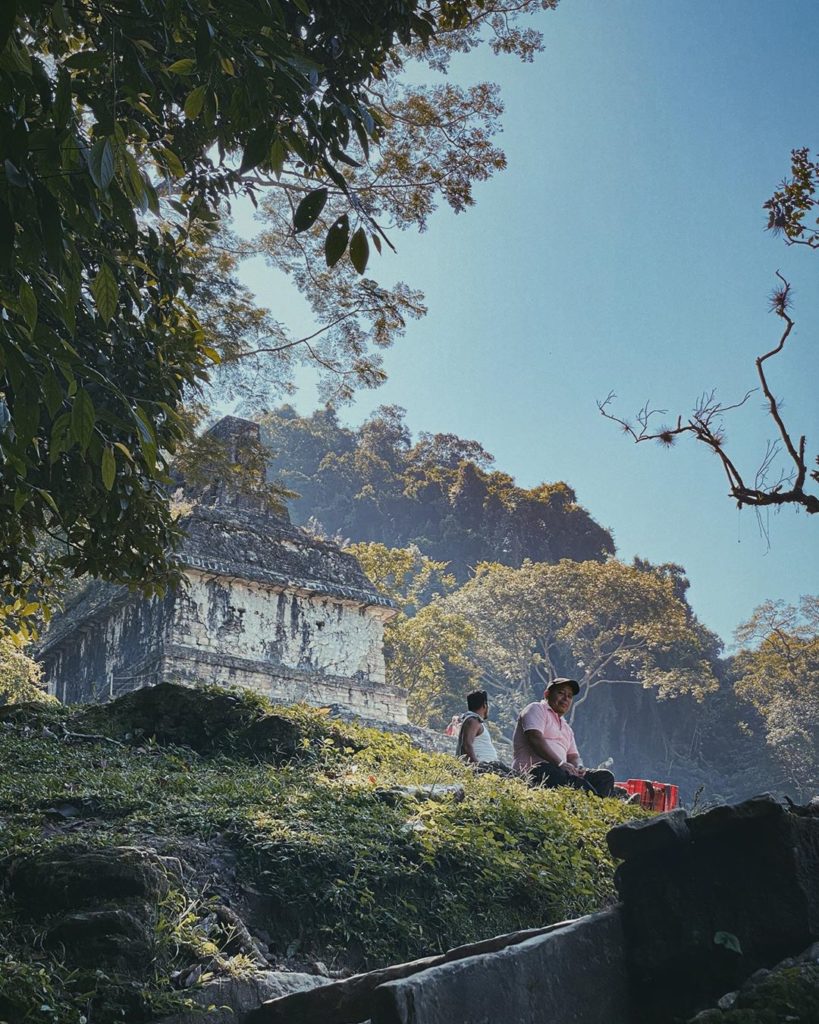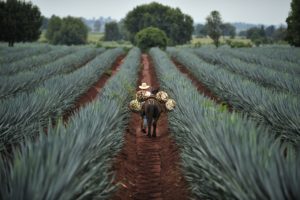Chiapas in Mexico, a paradise between nature and heritage
Chiapas in Mexico, a paradise between nature and heritage
Chiapas is one of those states where the heart is in shock.
Far from the hectic life of Ciudad de México, you will find in Chiapas a cosmopolitan mix of amazing natural landscapes made up of the most beautiful waterfalls in the world, magnificent ruins of ancient cities of the Mayan civilization, generous Mexican gastronomy and a great cultural heritage of the Chiapas Indians, the original peoples of the region.
Part of its charm lies in the living indigenous culture that has survived time. It is a unique place, where you connect with nature, where you enjoy the moment.
This small state in southern Mexico, bordering Guatemala, is home to nearly 4 million people, 22% of whom are indigenous. Most of them are still impregnated by Mayan traditions which occupy such a place in their daily life that the state has been nicknamed “Indian Mexico”.
Tradition and simplicity reign in Chiapas,
In some remote villages, the Tzotziles, the last descendants of the Maya, have preserved the authenticity of the rites and traditions of their ancestors.
However, indigenous peoples are also present in cities marked by Spanish colonialism, such as San Cristobal de las Casas, and cohabit perfectly with the architectural practices and buildings inherited from the colonial era.
DESTINATION
CHIAPAS
A paradise in Mexico

Chiapas is about an hour and a half by plane from Mexico City and Cancún. You can also get there by road with bus companies like ADO or OCC, very comfortable! It is thus quite possible to come for a short stay in this region during a vacation in Mexico. Chiapas is located in the south of Mexico, between the states of Tabasco, Veracruz, Oaxaca, Guatemala and the Pacific Ocean.
It is the perfect place to relax and enjoy the delights of a unique region on a trip to Mexico.
Renting a car is not essential to travel to Chiapas, but it is an option if you want to be free to travel.
From the Angel Albino Corzo International Airport, near the region’s capital Tuxtla Gutierrez and Christ of Copoya, you are within reasonable distance of all the tourist places to see in the region, whether it be the sublime pueblo Mágico of San Cristóbal de las Casas or Ocosingo, the gateway to deep Chiapas like the Selva Lacandona.
It only takes 30 minutes by car to go from a tropical climate and jungle to a temperate and mountainous environment. If you like contrasts of nature and culture, this is one of the best places to visit.
In terms of geography, the territory is very changeable, with each municipality offering a different experience in terms of landscapes, languages, traditions, climates, clothing, gastronomy and personality.
CHIAPAS
A highly protected biosphere reserve
In a setting of impressive natural beauty, the Chiapanecos generously share their cultural, historical and artistic treasures with all visitors.
The territory covers 73,200 hectares and is divided into 124 municipalities. Nature is generous; from coasts to mountains, beaches to jungles, gorges to rivers, its territory is full of jewels. It is home to biosphere reserves, forests, flora and fauna protection areas and resources, national parks, natural monuments, ecological centres and breathtaking reserve areas.
This region is particularly well preserved, as many places are classified as “Highly Protected Biosphere Reserves” (a protected area recognized by UNESCO as a model region reconciling biodiversity conservation and sustainable development).
An atypical region of Mexico
The charm of Chiapas lies in its many ecosystems that coexist and offer privileged geographical conditions that appeal to both indigenous people and visitors.
Let yourself be amazed by the natural splendors of this region. Do you love the turquoise blue and the almost luminous blue waterfalls?
Prepare yourself for lush vegetation, jungle and adventure movie sets, as Chiapas is full of places for unforgettable excursions such as Las 3 Tzimoleras, Misol-ha, El Chiflon or Agua Azul, far off the beaten track and completely unspoiled.
One cannot stay in this region dedicated to ecotourism without passing through the sublime lakes of the Montebello National Park. Located on the border with Guatemala, this preserved natural area of Chiapas is dedicated to the discovery of the 59 lakes that make it up and, more broadly, to the traditions of the Chiapas Indians that are linked to them.
We go back in time on board a traditional raft to discover a hidden cenote and a mysterious island in the middle of one of the lakes.
Walking in the middle of Chiapas is out of the ordinary, and it is one of the many pleasures of this destination. On foot, on horseback, by bike or even by kayak, you can get lost in the middle of the Selva Lacandona, in the Zapatista zone, or visit the incredible Sima de las cotorras to discover the many birds that hide there and that you can’t find anywhere else.
Simple and authentic Indians of Chiapas
The Indians of Chiapas are not descendants of the famous Aztecs, located in northern Mexico, but of the Mayans. Despite the hostility of these places, which are full of wild life, the people live in communion with nature and are always ready to share their way of life and their beliefs with curious adventurers.
There are 11 different indigenous peoples in Chiapas who have lost none of their authenticity nor their customs. They welcome modernity without losing or forgetting the history that built them, nor the way of life that characterizes them. This is what makes them so authentic. In Ocosingo, you will see the Tzeltal Indians come down to the local open-air market to sell their crops in traditional Mexican clothing, as they have probably done for decades. These open-air markets, like the Mercado Viejo in San Cristobal de las Casas, are full of Mexican handicrafts, traditional Mexican food and some typical Mexican artifacts. For example, there are the alebrijes, the beautiful wooden sculptures popularized by the movie Coco, which will find a place of choice in your garden or your living room if you wonder what to bring back from Mexico.
In Tuxtla Gutierrez, the capital of the state of Chiapas, locals and discerning vacationers alike head to the Marimba Park after dark. This colorful and musical place is the birthplace of the Marimba, the traditional music of Chiapas.
Here, there is a canteen spirit with large tables and always a lot of simplicity. From the city, you can also visit the famous “Cañon del Sumidero”. This majestic geological fault through which the Grijalva River flows from the center of Chiapas to the Gulf of Mexico.
In San Cristobal de Las Casas, the meeting place is the Zocalo.
Here you can find a concentration of the city’s crafts and gastronomy.
Locals and visitors alike gather here to buy and sell Mexican fruits and vegetables, local pastries such as galletas rellenas and empanizado de cacahuat, Mexican embroidered blouses, tamales, pox, gaznates, mole from Chiapas, coffee from Ocosingo, tortillas, queso de bolas, traditional Mexican clothing… This is the place to be! Next to the Zocalo, you will find in the Andador Guadalupano and the Andador Eclesiástico many trendy stores where you can buy amber jewelry, printed tejidos, lacas or basketry items. There are also a number of home decorating stores that sell local artists’ work and traditional furniture. A little further on, El Mercado de los Dulces (The Candy Market) is a labyrinth of colors and textures, next to the Templo de Santo Domingo, and is the ideal place to buy textiles and other handicrafts from Chiapas at a very good price. This motley mix of styles and genres provides a pleasant and relaxed atmosphere where everyone can find their place.
BERCEAU CULTUREL
RUINES MAYA
Chiapas is a pristine state. Travelling to the heart of Chiapas is like travelling back in time to the time of the explorers. Climb the remains of the pyramids in the middle of the jungle in Calakmul and you’ll feel like a modern-day Indiana Jones in search of hidden treasure. You’ll explore pristine lands that will transport you back to the Mayan era in a second. You’ll feel like you’re light years away from your everyday life!
Chiapas is a state where Mayan heritage closely coexists with that of the Spanish conquistadors, all in the heart of nature and extraordinary landscapes.
In a large part of Chiapas, as in the Yucatán Peninsula, Mayan culture developed during the classical era, a period of unprecedented glory and splendor, thanks to which impressive cities lost in the rainforest can be appreciated.
Among the most famous are : Palenque, Yaxchilán, Bonampak and Chinkultic. More discreet, the ruins of Tonina are a must for those who want to discover the true secrets of the natives of Chiapas and a Mayan city.

Welcome home
Typical Chiapas houses
The best way to adopt the rhythm of Chiapas is to live the way the people of the region live. You can cut yourself off from the world, get lost in the surrounding nature, watch the sunset over the ruins of Tonina and taste the best of Mexican cuisine such as Capirotada, chalupa or tamales, with a glass of tequila in your hand, the most famous Mexican drink.
Our houses and apartments were built with this in mind. Chiapas still abounds in ineffable cultural and natural gems whose richness can only be grasped after having been appreciated or told by the travelers themselves .
In our houses you will feel in a privileged environment. It is the ideal place to take a real break, prepare your next trip or simply enjoy the present moment.
Alma De Chiapas
22 blv Maréchal Leclerc, 38000, Grenoble, France
blablabla@alma-de-chiapas.com
@Copyright 2020 Alma de Chiapas
Legal Notice
Privacy policy
Design & Creation by Upleeft



